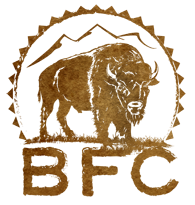By Greg Moore
Every summer, more than 4 million people visit Yellowstone National Park. Undoubtedly, a highlight of the trip for many of them is the chance to see the wild bison there. The picture those visitors get is of America’s iconic large mammal grazing peacefully, protected within the country’s most famous national park.
That picture is a fraud. When the bison migrate to lower elevations outside the park every winter, they become susceptible to a barrage of gunfire.

Many travel north, crossing the park boundary near the town of Gardiner, Montana. There, the bison are no longer under the protection of the National Park Service, but fall under the jurisdiction of the state of Montana. This winter, about 1,200 were killed by hunters. Another 288 were captured and quarantined to be shipped to the Fort Peck Indian Reservation in northeastern Montana. About 400 are estimated to have died from natural causes over the winter. Along with miscellaneous other causes of death, that means that close to 2,000 bison died this winter—nearly a third of the park’s total population of about 6,000.
The state justifies the mass hunt by claiming that bison pose a risk of infecting cattle with a disease called brucellosis. The cattle industry’s hold on bison management in Montana is evident by the fact that the state has transferred that authority from Fish, Wildlife and Parks to its Department of Livestock.
Brucellosis can cause abortion and sterility. However, the chance of cattle catching the disease from wild bison is almost zero, for several reasons:
- There are no cattle on public land just north of the park from mid-October to mid-June.
- In order for bison to infect cattle, the cattle would have to come into contact with infected birth tissues. Because bison consume the afterbirth of their own offspring and rarely abort, even pregnant cows pose very little risk. Bulls and nonpregnant cows pose no risk.
- Brucellosis bacteria do not survive long in warm weather or direct exposure to sunlight, and the activity of predators/scavengers all but guarantee that fetuses or infected birthing material will not persist in the environment beyond mid-May.
There has never been a documented transmission of brucellosis from wild bison to livestock. Cattle in Montana counties north and northwest of Yellowstone must be vaccinated against the disease. In Grand Teton National Park, where vaccinated cattle and brucellosis-exposed buffalo have been commingling for decades, no transmission has occurred.
Jackson Doyel, a wildlife biologist with the Buffalo Field Campaign, an organization that seeks to protect Yellowstone’s bison, notes that even if Yellowstone’s buffalo were allowed to expand their permanent range outside the park and somehow infected grazing cattle, that wouldn’t be a crisis. Elk also carry brucellosis (as do other wild animals) and have given it to cattle. Despite those infections, Montana has maintained its brucellosis-free status with the U.S. Department of Agriculture, and the elk are still allowed freedom of movement. (That
status with the USDA allows ranchers to ship cattle outside the state without testing for the disease, which would cost them money.) “It is clear cattle ranchers are not as concerned with brucellosis as they act, because otherwise elk would be treated similarly to the bison, but they are not,” Doyel said.
So if brucellosis isn’t a real threat, what explains the state of Montana’s determination to kill bison? Some opponents of the hunt claim that ranchers’ real concern is to avoid competition from bison for forage on public lands if the Yellowstone population increases enough to establish a year-round herd outside the park.
The Montana Department of Livestock’s grip on buffalo management outside the park could be loosened by listing Yellowstone’s bison under the Endangered Species Act. In 2014, the Buffalo Field Campaign and Hailey-based Western Watersheds Project petitioned the U.S. Fish and Wildlife Service to do that. After the agency twice found listing to be unwarranted, a lawsuit resulted in a court order to re-evaluate its findings. It now acknowledges that the petitioners have provided a credible claim that “management actions taken under the Interagency Bison Management Plan may curtail the species' available winter habitat through culling, hunting, hazing, and quarantine.”
If Yellowstone buffalo are listed, hunting would be prohibited until the U.S. Fish and Wildlife Service deems conditions to have improved to the point that the bison are no longer at risk of extinction.
A public comment period on the petitions to list the Yellowstone bison is open until June 4. To comment, go to regulations.gov/document/FWS-R6-ES-2022-0028-0001.







